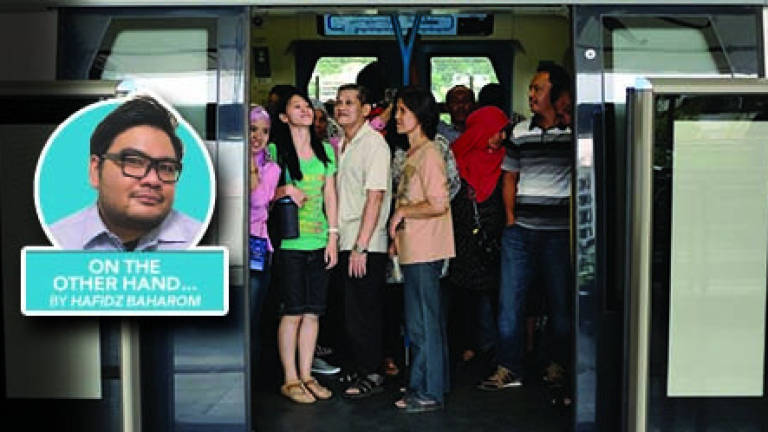Column - Bankruptcy and debt

NEWS broke recently that Parliament will be amending the Bankruptcy Act including raising the minimum threshold of debt before being declared bankrupt from RM30,000 to RM50,000.
Our government believes that raising the threshold of debt will help reduce the number bankrupts. Perhaps looking at statistics overall, they might be right.
Increasing the threshold would reduce the instances of people filing for bankruptcy. After all, at the current limit, defaulting on a few credit cards, or even a car loan puts an individual in the bankrupt category.
In April 2016, the Insolvency Department recorded 101,537 cases of bankruptcy in the period 2011 to 2015. A total of 28,374 cases involved those defaulting on car loans.
The age group of 35 to 44 recorded the highest instances of bankruptcy, at a whopping 35.24%. The state with the most bankrupts? Selangor with 29,421 in the same period.
Thus, we should ask, why is the government looking to make these people increase their debts, let alone allow more people to not be bankrupt after irresponsibly buying a car they cannot afford?
At the same time, we are talking about increasing household debt, at a time when it is at 88.5% of our GDP. Analysts expect this figure to go up.
Allowing people a higher threshold of debt will not help them or even the country. Instead, there is a need for better regulation when it comes to addressing how Malaysians end up bankrupt. Case in point, the need to own a car – and the government can help solve this by reducing the need.
Of course, credit goes to the government for trying to do so by encouraging ride-sharing and even rail transport.
But more can and should be done. An efficient feeder bus service is a must and what about the bus rapid transit systems.
And there is the fact that any property with easy access to public transport is usually expensive in the Klang Valley. Since affordability is an issue, social housing projects are often in the outskirts, denying access to public transport to those who sorely need it.
If they do try to buy property closer to public transport, isn't that also going to raise their debt and put them at risk of defaulting?
Bankruptcy and debt are tied to one major problem that nobody seems to bring up – wages. The government believes paying someone RM1,100 a month – inclusive of allowances – is enough to lead a sustainable life.
Similarly, the government isn't doing enough about sex education. Let's face it, children are expensive. You could earn RM10,000 a month and still struggle to feed a family of 12 while calling it a "blessing" and hoping God will provide while living in poverty.
While I applaud the move to dish out 1Malaysia People's Aid (BR1M) – similar to Brazil's Bolsa Familia – there is one major difference. The latter is given monthly via bank transfers with the requirement that all recipients send their children to school and the children attend at least 85% of classes, and they are vaccinated as required.
The increasing debt and bankruptcy cases indicate the problem is systemic – people are buying things they can barely afford. With stringent bank regulations covering car loans, how is it that there seems to be an increase in bad debts and defaults?
Are people losing jobs, thus unable to service loans leading to defaults? After all, 2015 was a depressing year which saw oil and gas, airline and banking sectors cutting staff. Thus, unemployment insurance would have been welcome to assist Malaysians avoid defaulting and ending up bankrupt.
Of course, the government is now considering such an insurance scheme much to the concern of employers.
However, raising the threshold of debt may not be the best solution.
The writer is a public relations practitioner. Comments: letters@thesundaily.com